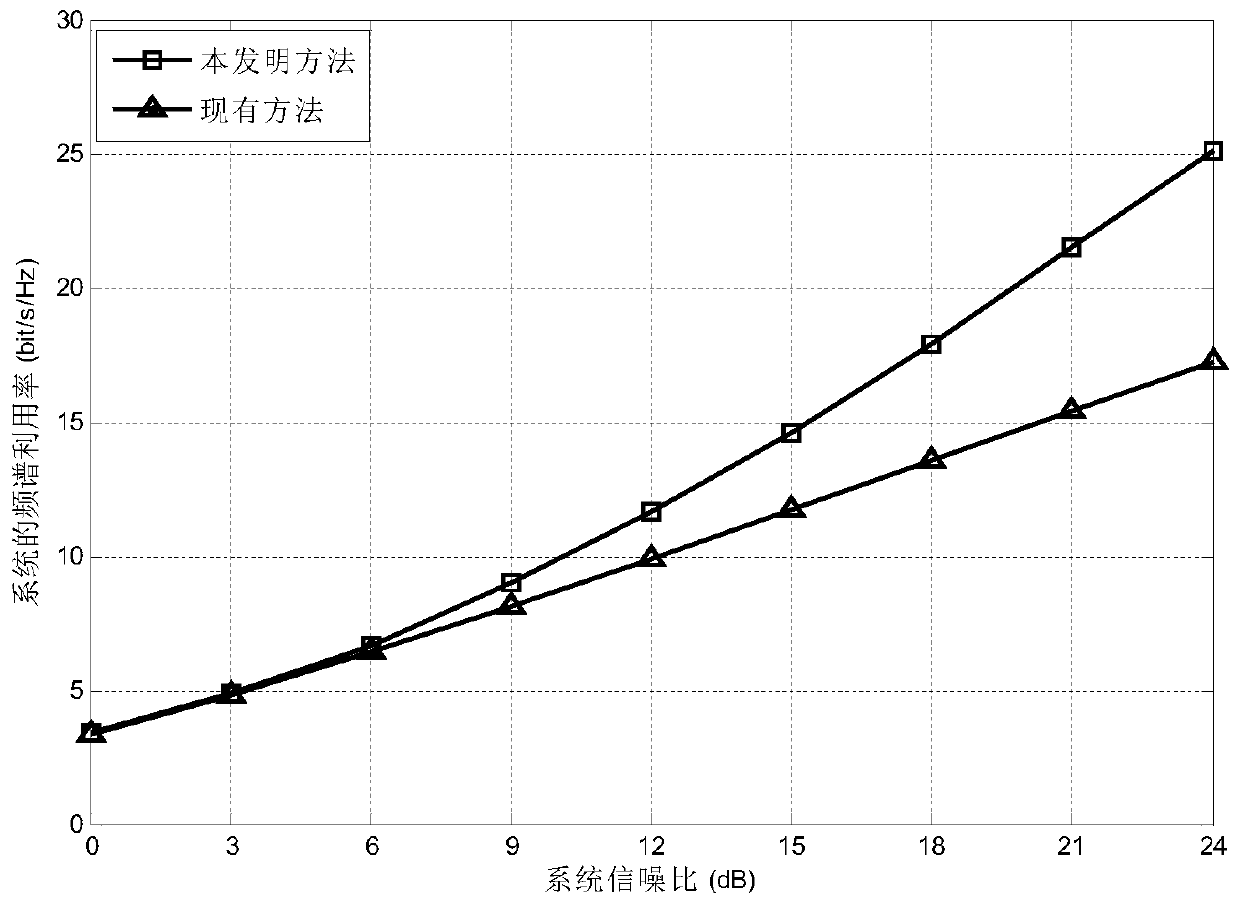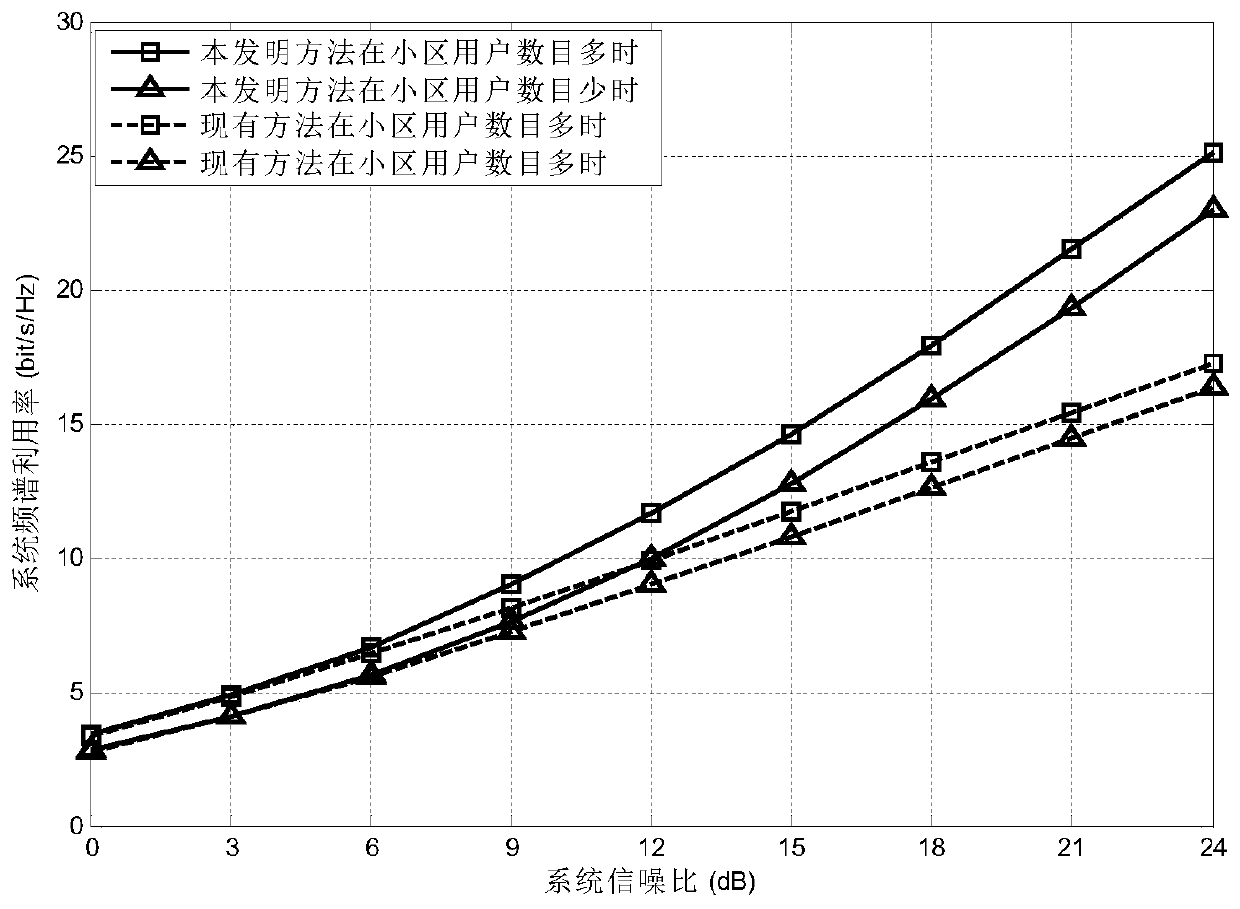A joint virtual mimo resource allocation method based on dynamic multi-cell user pairing
A user pairing and resource allocation technology, applied in the field of communications, can solve the problems of large system spectrum utilization, inability to obtain, and low system spectrum utilization, achieve efficient user matching and resource allocation, maximize frequency utilization, and improve system The effect of communication quality
- Summary
- Abstract
- Description
- Claims
- Application Information
AI Technical Summary
Problems solved by technology
Method used
Image
Examples
Embodiment 1
[0043] The present invention is a joint virtual MIMO resource allocation method based on dynamic multi-cell user pairing, see figure 1 , including the following steps,
[0044] (1) The base station obtains basic parameters
[0045] The base station obtains the set 1 of users to be paired in the current time slot, and a single N u Number of users to be paired in the cell N u , the number of cells L, the resource block set r, the number of resource blocks N, the number of receiving antennas N r and the distance d from each user to each cell base station; the parameters obtained by the base station of the present invention not only include the user's own parameters, but also include the parameters of resource blocks and cells.
[0046] (2) Constructing a resource allocation constraint matrix
[0047] According to the resource block set r and the number of resource blocks N, an optional resource block allocation set P is formed; according to the optional resource block allocatio...
Embodiment 2
[0075] The joint virtual MIMO resource allocation method based on dynamic multi-cell user pairing is the same as that of Embodiment 1, wherein the optional resource block allocation set P is formed according to the resource block set r and the number of resource blocks N=4 as described in step (2), It includes the following steps:
[0076] 2a) Generate an empty initial set of optional resource block allocations P 0 ;
[0077] 2b) In the resource block set r={r 1 ,r 2 ,…,r j ,…,r 4}, select 1 resource block, and put the number of this resource block as an element into P 0 middle;
[0078] 2c) Select 2 consecutive resource blocks in the resource block set r, and put the 2 numbers of these 2 consecutive resource blocks as an element into P 0 middle;
[0079] 2d) Select 3 consecutive resource blocks in the resource block set r, and put the 3 numbers of these 3 consecutive resource blocks into P as an element 0 middle;
[0080] 2e) Select 4 consecutive resource blocks in ...
Embodiment 3
[0088]The joint virtual MIMO resource allocation method based on dynamic multi-cell user pairing is the same as the embodiment 1-2, wherein in step (3), according to the set of users to be paired 1 and the number of receiving antennas N r =4, generate an optional user pair set G, and proceed as follows:
[0089] 3a) Generate an empty initial set of optional user pairs set G 0 ;
[0090] 3b) In the set of users to be paired l={l 1 ,l 2 ,…,l i ,…,l 32}, select 1 user, and put the user's ID as an element into G 0 middle;
[0091] 3c) Select 2 users in the user set 1 to be paired, and put the 2 numbers of these 2 users as an element into G 0 middle;
[0092] 3d) Select 3 users in the user set 1 to be paired, and put the 3 numbers of these 3 users as an element into G 0 middle;
[0093] 3e) Select 4 users in the user set 1 to be paired, and put the 4 numbers of these 4 users as an element into G 0 middle;
[0094] 3f) Repeat steps 3b), 3c), 3d) and 3e) until the user se...
PUM
 Login to View More
Login to View More Abstract
Description
Claims
Application Information
 Login to View More
Login to View More - R&D
- Intellectual Property
- Life Sciences
- Materials
- Tech Scout
- Unparalleled Data Quality
- Higher Quality Content
- 60% Fewer Hallucinations
Browse by: Latest US Patents, China's latest patents, Technical Efficacy Thesaurus, Application Domain, Technology Topic, Popular Technical Reports.
© 2025 PatSnap. All rights reserved.Legal|Privacy policy|Modern Slavery Act Transparency Statement|Sitemap|About US| Contact US: help@patsnap.com



